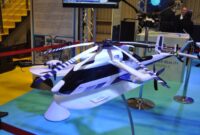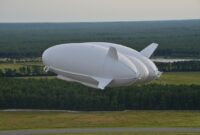Automation for single pilot planes sparks fears, raising questions about safety, pilot training, and the very future of aviation. While the idea of flying solo in a plane controlled by a computer might seem like science fiction, it’s becoming a reality with the rapid advancements in aviation technology.
The promise of increased efficiency and lower costs is enticing, but concerns about the potential consequences of relying solely on automation in the cockpit are growing.
The concept of single-pilot aircraft isn’t entirely new. For decades, small, general aviation planes have been flown by single pilots, but the rise of automation is taking this to a whole new level. We’re now seeing the development of larger, commercial aircraft capable of operating with a single pilot, relying on advanced computer systems for navigation, communication, and even landing.
This shift towards automation is driven by a desire to reduce costs, improve efficiency, and address the growing shortage of pilots. But it also raises serious questions about safety and the role of human pilots in the future of aviation.
The Rise of Single-Pilot Automation: Automation For Single Pilot Planes Sparks Fears

The aviation industry is witnessing a significant shift towards single-pilot aircraft, driven by advancements in automation and the pursuit of cost-efficiency. This trend, while offering numerous advantages, also raises concerns about safety and the potential for human error.
The Current State of Single-Pilot Aircraft Technology
Single-pilot aircraft are becoming increasingly sophisticated, incorporating advanced automation systems that handle critical tasks such as navigation, communication, and even flight control. These systems are designed to enhance safety and reduce pilot workload, enabling a single pilot to manage complex flight operations.
Motivations for Developing Single-Pilot Aircraft
The development of single-pilot aircraft is driven by a confluence of factors:* Cost Reduction:Single-pilot operations reduce crew costs, making air travel more affordable for airlines and passengers.
Increased Efficiency
Automation allows pilots to focus on critical tasks, improving operational efficiency and reducing flight times.
Enhanced Safety
Advanced automation systems can detect and mitigate potential hazards, enhancing safety and reducing the risk of human error.
Growing Demand
The increasing demand for air travel, particularly in regional and short-haul markets, necessitates more efficient and cost-effective solutions, leading to the adoption of single-pilot aircraft.
Examples of Single-Pilot Aircraft in Use
Several single-pilot aircraft are already in use, showcasing the advancements in automation technology:* Cirrus SR22:This popular general aviation aircraft features a sophisticated autopilot system and an advanced safety feature known as the Cirrus Airframe Parachute System (CAPS).
Diamond DA42 Twin Star
This twin-engine aircraft utilizes a fully integrated glass cockpit with advanced automation systems for navigation and flight control.
Pilatus PC-12
This single-engine turboprop aircraft is known for its versatility and advanced automation features, enabling single-pilot operations for a wide range of missions.
Capabilities of Single-Pilot Aircraft vs. Multi-Pilot Aircraft
| Feature | Single-Pilot Aircraft | Multi-Pilot Aircraft ||—|—|—|| Crew | 1 pilot | 2 or more pilots || Automation | High level of automation for navigation, communication, and flight control | Limited automation, typically for navigation and communication || Pilot Workload | Reduced workload due to automation | Higher workload, requiring coordination between pilots || Cost | Lower operating costs | Higher operating costs || Safety | Enhanced safety through automation and advanced safety features | Redundancy in crew provides a safety margin || Flexibility | Limited flexibility in complex flight operations | Greater flexibility in complex flight operations |
Safety Concerns and Public Perception

The prospect of single-pilot aircraft, especially those heavily reliant on automation, raises significant safety concerns. While automation can undoubtedly improve efficiency and reduce pilot workload, the potential for malfunctions and the limitations of automation in handling unforeseen situations pose considerable risks.
Automation Failures and Potential Risks
The primary concern with single-pilot automation is the potential for system failures. Automation systems, despite their sophistication, are not infallible and can malfunction. This can lead to a variety of issues, including:
- Incorrect or misleading information:Automation systems may provide inaccurate data to the pilot, leading to poor decision-making. For example, a faulty sensor might provide inaccurate altitude readings, causing the pilot to make incorrect adjustments.
- Unexpected system shutdowns:Automation systems can unexpectedly shut down due to software glitches, hardware failures, or even external factors like electromagnetic interference. This can leave the pilot with limited control and potentially dangerous situations.
- Inability to adapt to unforeseen circumstances:Automation systems are designed to handle specific situations. However, in unexpected or complex scenarios, they may not be able to respond effectively. This could require the pilot to manually override the system, which might be challenging in a time-sensitive situation.
Potential Scenarios Where a Single Pilot Might Be Overwhelmed, Automation for single pilot planes sparks fears
Several scenarios could overwhelm a single pilot, particularly in situations where automation fails or is unable to cope with the demands of the situation. These scenarios include:
- Severe weather conditions:Turbulence, lightning strikes, or heavy rain can create challenging conditions that may require the pilot to manually control the aircraft. This could be overwhelming for a single pilot, especially if they are also dealing with a malfunctioning automation system.
- System malfunctions during critical phases of flight:Automation failures during takeoff, landing, or other critical phases of flight could pose significant risks. The pilot might not have enough time to react appropriately, potentially leading to accidents.
- Multiple system failures:If multiple systems fail simultaneously, the pilot may be overwhelmed with the task of managing the aircraft manually. This could lead to a cascading effect of failures and a loss of control.
Public Perception of Single-Pilot Aircraft
Public perception of single-pilot aircraft is mixed. Some individuals are enthusiastic about the potential for increased accessibility and lower costs, while others are concerned about the safety implications.
- Concerns about safety:Many people are apprehensive about the idea of flying in an aircraft with only one pilot, particularly given the potential for automation failures. They worry about the pilot’s ability to handle emergencies and make critical decisions without assistance.
- Trust in automation:Some people have reservations about relying on automation for critical flight operations. They believe that human pilots are better equipped to handle complex situations and make decisions based on intuition and experience.
- Acceptance of automation:The level of public acceptance of automation in aviation is likely to vary depending on individual perceptions and experiences. Some people may be more comfortable with automation than others, particularly those who are familiar with its capabilities and limitations.
Discover how getir shuts amsterdam dark stores withdraws dutch cities has transformed methods in this topic.





